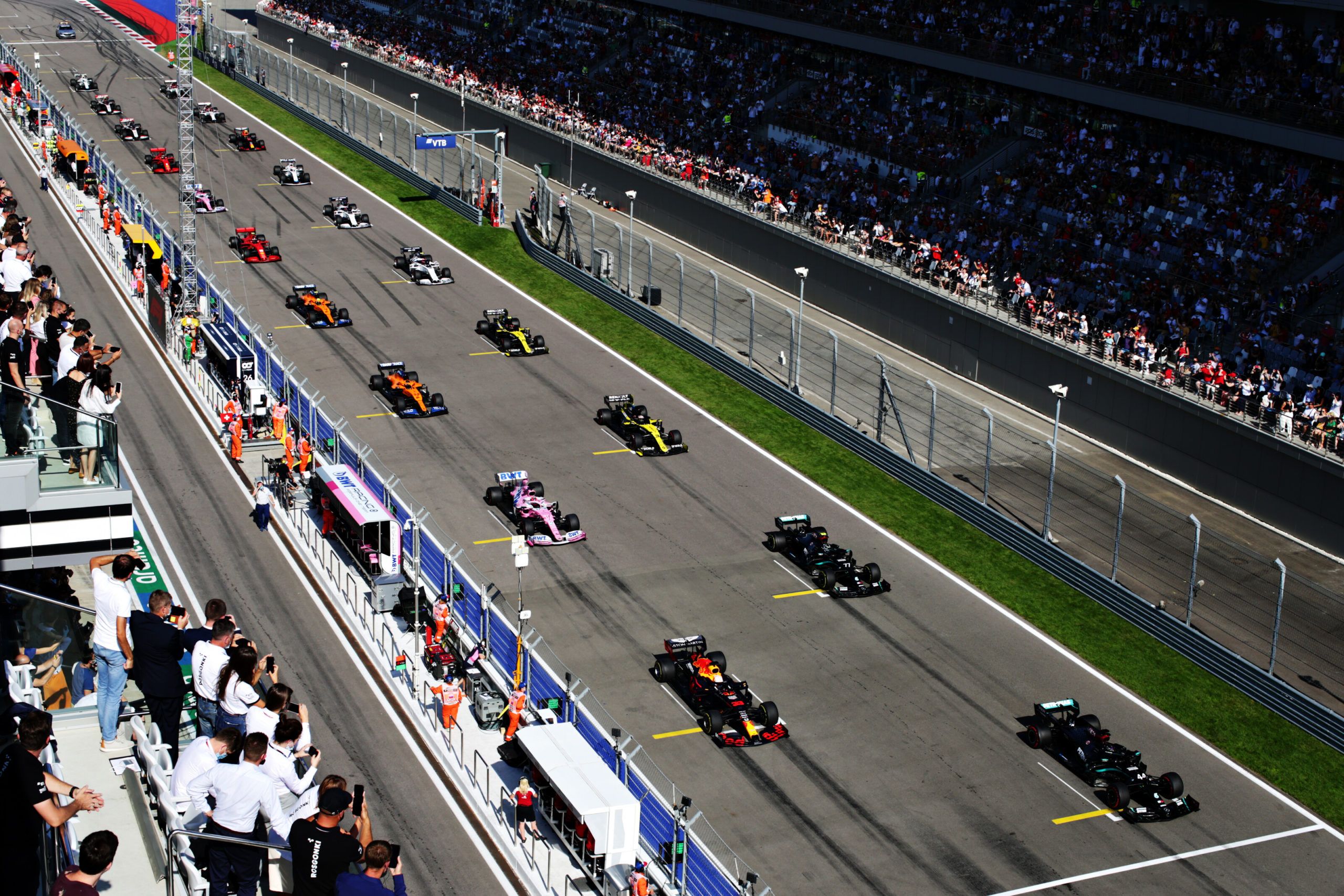Liberty Media has shared a downward financial report for Q4 and whole 12 months of the 2020 F1 season, which has been largely affected by COVID-19.
The trend of decreasing revenues in Q1, Q2 and Q3 continued for the 2020 F1 season when compared to 2019 as Liberty Media posted a similar thing for Q4 due to COVID-19. In fact, the overall income for the 12 months also decreased as per the financial statement.
The total revenue for the three months of 2020 from 2019 dropped from $523 to $485, while for 12 months from 2019 to 2020, it decreased from $2,022 to $1,145 – all in millions. The primary and other F1 revenue had mixed figures for three and 12 months.
The former saw a jump from $382 to $415, while latter went from $141 to $81 for the three months. At the same time, the 12 months figures dropped for both, with former dipping from $1,664 to $964 and the latter from $358 to $181.
The team payments decreased for 12 months, where it went from $1,012 to $711 after Liberty Media paid more to the F1 outfits in the three months. The operating income showed a loss for the three months and also 12 months period, respectively.
The former saw it go up from $6 to $23 in negative figures, while the latter saw it jump from a positive $17 to a whooping negative of $386. The races held were five to seven in the three months, while in 12 months it was 21 to 17 – from 2019 to 2020.
“I am thrilled to join the Formula 1 organization and continue to build on the strong foundation set by Chase Carey and the team,” said Stefano Domenicali. “We are planning a record-setting 23 race calendar in 2021 and continue to work with governments, promoters and local organizations as we navigate COVID-19 protocols and regulations.
“We’ve been excited to see drivers, celebrities and fans engage as we once again hosted the F1 Esports Virtual Grand Prix in 2021 and we look forward to the start of the season in Bahrain on March 28th.”
Here’s the full explanation from Liberty Media regarding their growth in terms of finance in the 12 months:
“Primary F1 revenue represents the majority of F1’s revenue and is derived from (i) race promotion fees, (ii) broadcasting fees and (iii) advertising and sponsorship fees. For the year ended December 31, 2020, these revenue streams comprised 12%, 55% and 17%, respectively, of total F1 revenue.
“Primary F1 revenue increased in the fourth quarter primarily due to growth in broadcast revenue as a result of the pro-rata recognition of such revenue, with 7 of the 17 races taking place in the fourth quarter of 2020 compared to 5 of the 21 races taking place in the fourth quarter of 2019, partly offset by the impact of one-time contract fee renegotiations with certain broadcasters for 2020.
“Race promotion and advertising & sponsorship revenue both declined in the fourth quarter. Race promotion revenue was limited as fans were prohibited from attending all but two races during the fourth quarter. Advertising & sponsorship fees declined driven by one-time changes in sponsorship contracts due to the cancellation of races to which contracted sponsorship inventory specifically related and the limited activities at the races, including hospitality.
“Primary F1 revenue declined in the full year. Race promotion revenue decreased as fans were prohibited from attending all but three races, which led to one-time changes in the contractual terms of the originally scheduled races that remained on the 2020 calendar and limited revenue generated from the replacement races that were added. Broadcast revenue decreased as the altered schedule triggered lower fees pursuant to the contractual terms of certain broadcast agreements, as well as other one-time contract negotiations that took place in 2020.
“Advertising & sponsorship revenue declined as F1 was prevented from delivering all elements of a typical sponsorship offering due to the cancellation of certain events to which contracted sponsorship inventory related and the limited activities available at the races, including hospitality. This led to a number of one-time changes in sponsorship fees for 2020, and in some cases the deferral of revenue related to undelivered sponsorship contract rights into future years.
“Other F1 revenue decreased in the fourth quarter due to the non-operation of the Paddock Club at all events but one race, and even then with strictly limited capacity, and lower freight revenue driven by fewer flyaway races, partially offset by increased revenue from the F2 and F3 support series as there were two additional races in the current period compared to the prior year. For the full year, other F1 revenue decreased due to less races held, the non-operation of the Paddock Club and lower freight revenue, partially offset by increases in licensing and digital media income driven primarily by growth in F1 TV subscriptions.
“Operating loss grew and adjusted OIBDA decreased in the fourth quarter and full year 2020. Team payments increased in the fourth quarter due to the pro rata recognition of prize fund payments across the race season, and team payments decreased in the full year driven by the contraction in F1 revenue and the associated impact on the calculation of variable elements of team payments. Team payments in 2020 included one-time fees paid to teams upon signing the 2021 Concorde Agreement.
“Other cost of F1 revenue is largely variable in nature and mostly relates to revenue opportunities. These costs decreased in the fourth quarter and full year due to lower hospitality and lower freight costs from fewer, logistically cheaper races. Selling, general and administrative expense decreased in the fourth quarter and full year primarily due to lower personnel and other expenses and reduced discretionary marketing expense.”
Here’s details from Liberty Media of F1 2019 figures
Here’s details from Liberty Media F1 2020 Q3 figures

